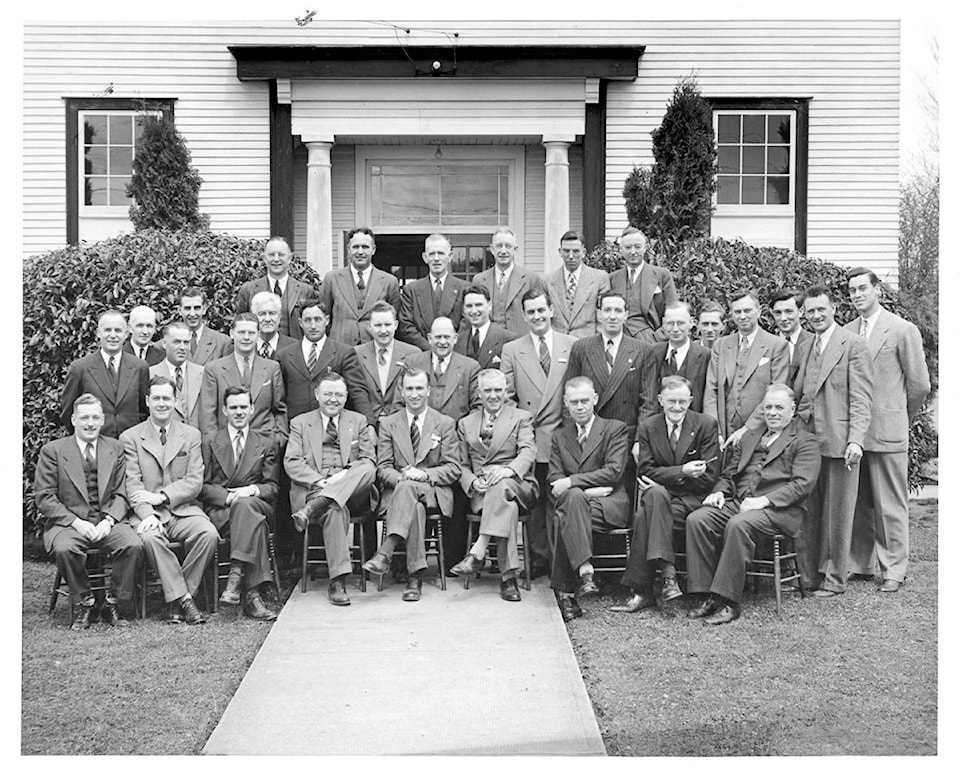Computers, COVID, space travel, even penicillin – there’s so much about modern life that would have been unimaginable back in 1931.
That’s the year the Langley Board of Trade was formed. The business-oriented group was created two years into the Great Depression, the worst economic downturn the world had ever seen.
It’s doubtful that the local merchants and tradespeople who started the organization that would evolve to become the Greater Langley Chamber of Commerce guessed they were creating an institution that would live on for 90 years.
“I think they would be amazed at the amount of work that we can achieve together using technology and all levels of government,” said chamber executive director Colleen Clark.
So much has changed about society but for business, it’s still about providing goods and services to clients. For a business organization, the biggest change has been technology how technology allows it to help its clients – the businesses of this community.
“It has completely changed businesses and how we interact with them,” Clark said.
Those early founders still have their names attached to roads, streets, parks and schools around the community in the coming generations.
Near the top of the list is Dr. Benjamin Marr, a First World War veteran, and Langley’s first resident physician after he arrived in 1907.
Noel Booth, the longtime Township councillor, signed, listing his job as merchant.
P.Y. Porter, whose general store still stands at Murrayville’s Five Corners, added his name.
The professions listed include quite a few merchants and storekeepers, along with a real estate broker, some hotel keepers, engineers, carpenters, farmers, a veterinarian, and one man who listed himself as unemployed.
Other jobs on the list are long gone, or have been transformed by time. A.G. Fulton is listed as a station agent for the long-gone BC Electric Railroad, which ran the length of the community.
There are also tailors and shoemakers, a miller, a tinsmith, and one man who listed his occupation as “cafe jack.”
RELATED: Resilient Langley businesses lauded for their COVID twists
Board of Trade documents mention the most recent census in 1929, which put Langley’s population at just 5,012 people. There was also just one Langley at the time, as the split between Township and City was in the future, not happening until the province approved the split in 1955.
Some of the earliest records, from the 1930s, were lost, apparently in the great flood of 1948.
Records were kept in people’s place of business, or in a storeroom. So they often did not survive moves or decluttering.
But when the first hand-written minutes, taken in the early 1940s during the Second World War, emerge, they show that local business owners have always had the same concerns.
Flip through a few of the yellowing pages and decipher the spidery handwriting, and issues of transportation, taxes, and parking jump out.
Transportation has been a concern in the Langleys since the day the first wagon came into town.
Early minutes also contain references to the board of trade opposing the introduction of parking meters in Langley City.
The board suggested a parking bylaw instead, and parking time limits remain in place in the City to this day.
Also in 1944, one of the first items discussed at one meeting was tolls on bridges.
In that case, it was the Patullo Bridge, then the only fixed link between the north and south sides of the Fraser River, that local merchants were worried about. They wanted those tolls removed.
.
Chamber changes with time
Changes in technology and institution have erased other concerns.
Minutes from a 1945 meeting contain a suggestion to the volunteer firefighters. When they are out at a call, one man should remain at the nearest phone, in case a second fire begins in another part of the town. In an era of cellphones and professional firefighters, that recommendation seems to have been met.
The popularity and strength of the Board of Trade, and later the Chamber, waxed and waned over the years.
In the early 1960s, the old board of trade re-named itself the chamber of commerce, a trend that was sweeping Canada at the time, transforming many other boards into chambers.
The 500 people who attended an annual general meeting in 1959 is actually a few more than turn out for modern AGMs.
RELATED: Local angel chosen for top Langley Chamber of Commerce community award
But by the early 1970s, the chamber almost vanished.
A motion was actually put in place to dissolve the entire organization, after a few years of low attendance at meetings and limited participation. Fortunately, the shock motivated more members to return, and within a few years the chamber had returned to fighting strength.
For most of its history, the chamber operated out of businesses, holding all its meetings in restaurants and halls. In some cases, meetings were held as far afield as White Rock.
In the 1970s, the monthly meetings were held in a long-vanished Chinese restaurant called the Golden Pagoda, while meetings of the board were held in the Prairie House, a converted home at the corner of Glover Road and the Langley Bypass.
While the chamber had an office by the 1980s, it moved into a Glover Road location in 1996 and its current larger location at 8047 199 St. in 2015.
The chamber has continued to innovate, as technology changes the way people do business but the reason behind its creation will remain constant – to be the voice of business for the community.
“Advocate, promote and serve the business community – these ideas and visions have been the same since 1931 we have evolved how we achieve these but they are constant,” Clark said.
.
Is there more to the story? Email: news@langleyadvancetimes.com
Like us on Facebook and follow us on Twitter.
